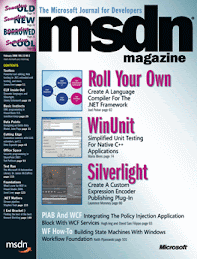Back during the holidays, I wrote a small .NET program to manipulate my Canon XTi camera, which was connected to the PC via USB. Everything worked great when I was using my laptop that had Vista on it. But on my wife's laptop that had XP, the performance became unbearable. My utility program would wait for several minutes before I could start using it. The program's thread was pretty much idle during the waiting so I was asking myself: could this be the PC hardware? I tested this program on one of my desktops that also had XP. Nope, still the same poor performance. I then updated the camera's firmware and that didn't resolve the issue either. I began to suspect that this was OS related. Sure enough, when I plugged in the camera without my program running, XP took a much longer time than Vista to come up with the camera and scanners wizard. I noticed that while XP seemed to be cluelessly waiting, the CF card indicator light of the camera was flashing madly. I realized that XP was probably trying to download pictures from the camera, which was busy reading from the CF card. At the time, I had about 300 high resolution pictures on the 2GB CF card. After I switched it with an empty CF card, the performance problem just went away.
The morale of the story is that we need to be extra careful when making assumptions for users when designing UI applications. In this case, XP made a not necessarily wise assumption about the intention of plugging a camera into the USB port. Even for users who do want to download pictures this way, there is no visual clue provided, leaving users wonder what is going on.
Making Assumptions in Application Design
Posted by Hugh Ang at 2/18/2009 11:46:00 AM
This entry was posted on 2/18/2009 11:46:00 AM
.
You can follow any responses to this entry through the RSS 2.0 feed. You can leave a response, or trackback from your own site.
![]()
Subscribe to:
Post Comments (Atom)

0 comments:
Post a Comment